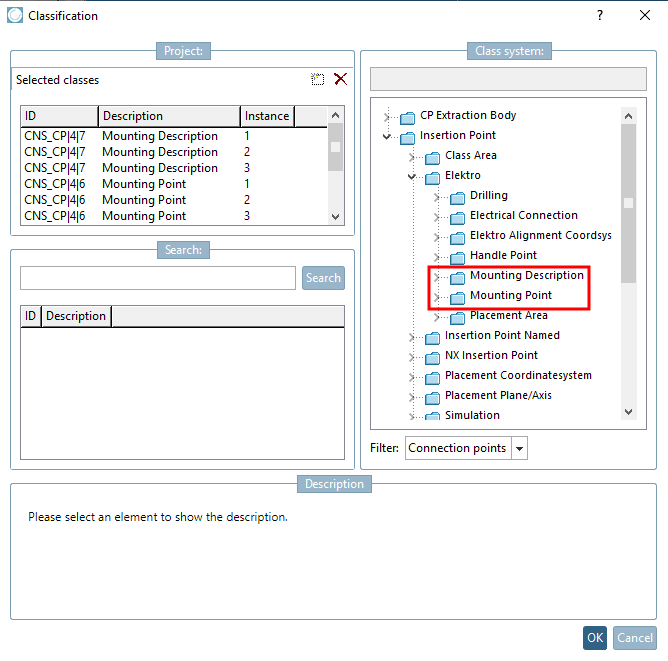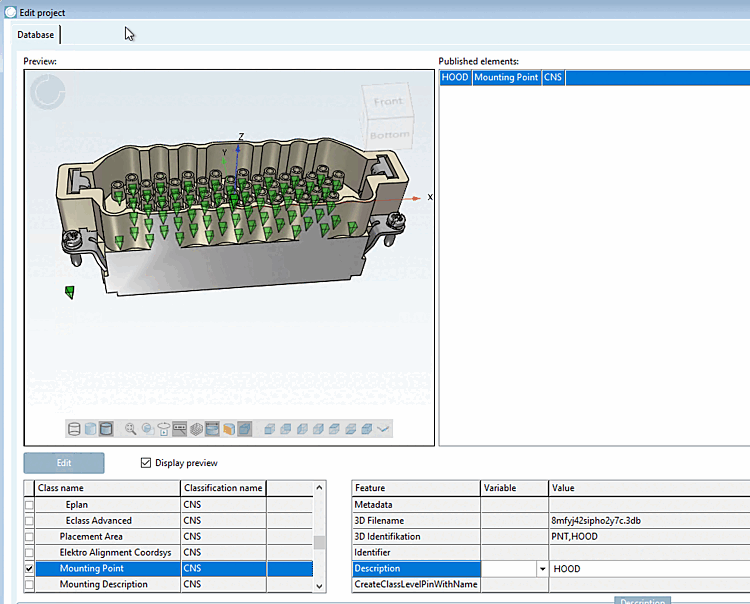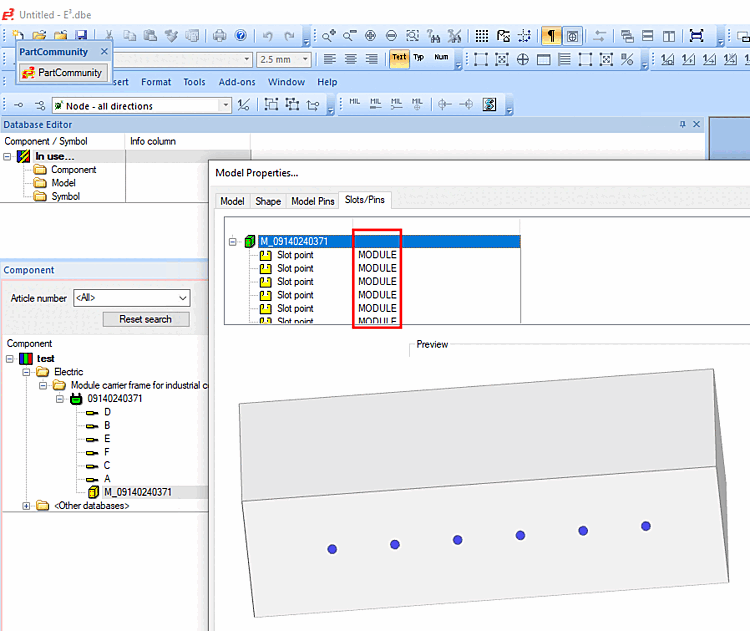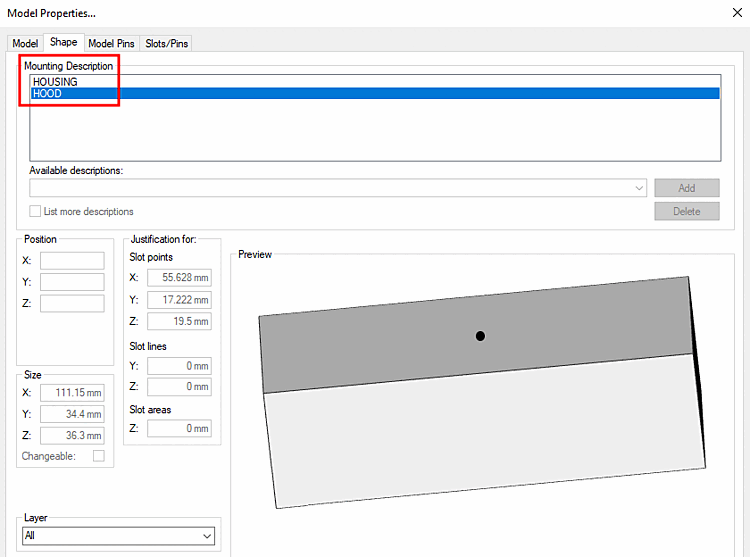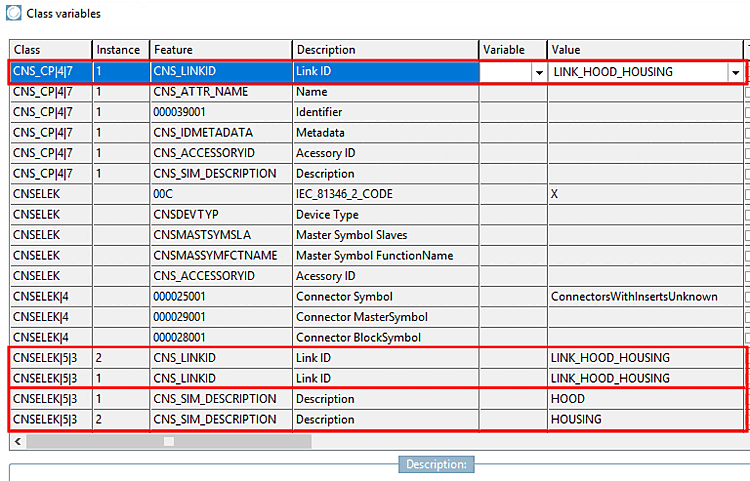In addition to the connection point classifications [Connection points] for Electrical Connection, the connection point classifications [Connection points] Mounting Point (CNS_CP|4|6) and Mounting Description (CNS_CP|4|7) are particularly important.
All mounting points must be equipped with an attachment point [Connection point].
The connection points are classified as mounting points or mounting descriptions.
Mounting Point describes where other components can be attached to the component.
Mounting Description describes the point and direction at which it can be mounted (plugged on) to a compatible component.
This is differently supported by CAD systems.
Zuken E3: Here, building assemblies via Mounting Points is only rudimentarily supported. I.e. parts can only be plugged in direction of the Z axis. Fitting (compatible) parts are modelled via system of mounting description and the slot description. Furthermore a part may have only one position for the Mounting Description (but several mounting description strings. The direction of the Mounting Description gets lost during the export to E3.
Classification with Mounting Point (CNS_CP4|6 ) runs by default.
In the Mounting Description class (CNS_CP4|7 ), the important point is the Description feature. Its value appears later as the slot name in E3 and states that only parts whose Description characteristic has the same value can be mounted. As it may be possible to attach different parts, it must be possible to specify several values. As the CNS classification system does not support arrays, a special method is used here. Details can be found below.
The figure exemplarily shows the value"HOOD" at the attribute "Description". Basically the name can freely be chosen, however, regard to give meaningful names.
The following figure shows a component in Zuken E3 with 6 slots, each with the description "MODULE", which means that the component can accommodate 6 subcomponents with mounting description "MODULE".
This component itself can in turn be plugged into the slots of other components, provided these slots are called "HOUSING" or "HOOD". Please note: We have a mounting description here that obviously manages 2 strings.
The classification scheme is completely analogous to the classification of electrical connections. The only difficulty is that there may be several "descriptions". In this case, the "auxiliary class" CNSELEK|5|3 is used.
Various values can then be entered in the CNSELEK|5|3 class in the Description feature. In this way, the mounting description manages an array of strings. Compare Fig. „ "Mounting Description " in Zuken E3.“.
Once the connection point has been selected and classified as Mounting Description (CNS_CP|4|7), the decisive point is the value under Feature Link ID. It references multiple instantiated classes of type CNSELEK|5|3, which in turn have the same value under Feature Link ID. This class is the container for the mounting description strings, which are entered in the class of type CNSELEK|5|3 in the Description characteristic.
| Link ID (attribute of CNSELEK|5|3) | Description (attribute of CNSELEK|5|3) | Instantiated by CNSELEK|5|3 |
| "Link 1" | "Description 1 of 3" | 1 |
| "Link 1" | "Description 2 of 3" | 2 |
| "Link 1" | "Description 3 of 3" | 3 |
Example: Mounting Description (CNS_CP|4|7 ) for an array with 2 entries:
So the component itself can be plugged into a "HOOD" or a "HOUSING".


![[Note]](https://webapi.partcommunity.com/service/help/latest/pages/jp/3dfindit/doc/images/note.png)
